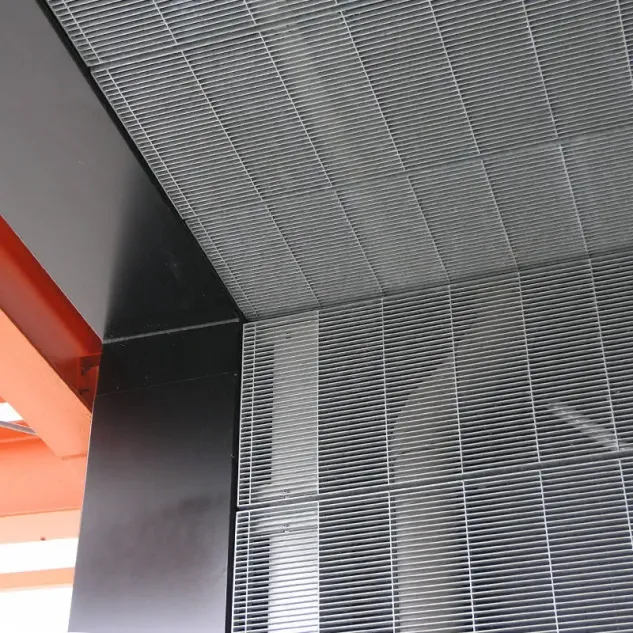- Industrial zone, South of Anping Town, Hengshui, Hebei, China.
- sales@hfpetromesh.com
- +86-18931809706
 Afrikaans
Afrikaans  Albanian
Albanian  Amharic
Amharic  Arabic
Arabic  Armenian
Armenian  Azerbaijani
Azerbaijani  Basque
Basque  Belarusian
Belarusian  Bengali
Bengali  Bosnian
Bosnian  Bulgarian
Bulgarian  Catalan
Catalan  Cebuano
Cebuano  Corsican
Corsican  Croatian
Croatian  Czech
Czech  Danish
Danish  Dutch
Dutch  English
English  Esperanto
Esperanto  Estonian
Estonian  Finnish
Finnish  French
French  Frisian
Frisian  Galician
Galician  Georgian
Georgian  German
German  Greek
Greek  Gujarati
Gujarati  Haitian Creole
Haitian Creole  hausa
hausa  hawaiian
hawaiian  Hebrew
Hebrew  Hindi
Hindi  Miao
Miao  Hungarian
Hungarian  Icelandic
Icelandic  igbo
igbo  Indonesian
Indonesian  irish
irish  Italian
Italian  Japanese
Japanese  Javanese
Javanese  Kannada
Kannada  kazakh
kazakh  Khmer
Khmer  Rwandese
Rwandese  Korean
Korean  Kurdish
Kurdish  Kyrgyz
Kyrgyz  Lao
Lao  Latin
Latin  Latvian
Latvian  Lithuanian
Lithuanian  Luxembourgish
Luxembourgish  Macedonian
Macedonian  Malgashi
Malgashi  Malay
Malay  Malayalam
Malayalam  Maltese
Maltese  Maori
Maori  Marathi
Marathi  Mongolian
Mongolian  Myanmar
Myanmar  Nepali
Nepali  Norwegian
Norwegian  Norwegian
Norwegian  Occitan
Occitan  Pashto
Pashto  Persian
Persian  Polish
Polish  Portuguese
Portuguese  Punjabi
Punjabi  Romanian
Romanian  Russian
Russian  Samoan
Samoan  Scottish Gaelic
Scottish Gaelic  Serbian
Serbian  Sesotho
Sesotho  Shona
Shona  Sindhi
Sindhi  Sinhala
Sinhala  Slovak
Slovak  Slovenian
Slovenian  Somali
Somali  Spanish
Spanish  Sundanese
Sundanese  Swahili
Swahili  Swedish
Swedish  Tagalog
Tagalog  Tajik
Tajik  Tamil
Tamil  Tatar
Tatar  Telugu
Telugu  Thai
Thai  Turkish
Turkish  Turkmen
Turkmen  Ukrainian
Ukrainian  Urdu
Urdu  Uighur
Uighur  Uzbek
Uzbek  Vietnamese
Vietnamese  Welsh
Welsh  Bantu
Bantu  Yiddish
Yiddish  Yoruba
Yoruba  Zulu
Zulu
- Afrikaans
- Albanian
- Amharic
- Arabic
- Armenian
- Azerbaijani
- Basque
- Belarusian
- Bengali
- Bosnian
- Bulgarian
- Catalan
- Cebuano
- Corsican
- Croatian
- Czech
- Danish
- Dutch
- English
- Esperanto
- Estonian
- Finnish
- French
- Frisian
- Galician
- Georgian
- German
- Greek
- Gujarati
- Haitian Creole
- hausa
- hawaiian
- Hebrew
- Hindi
- Miao
- Hungarian
- Icelandic
- igbo
- Indonesian
- irish
- Italian
- Japanese
- Javanese
- Kannada
- kazakh
- Khmer
- Rwandese
- Korean
- Kurdish
- Kyrgyz
- Lao
- Latin
- Latvian
- Lithuanian
- Luxembourgish
- Macedonian
- Malgashi
- Malay
- Malayalam
- Maltese
- Maori
- Marathi
- Mongolian
- Myanmar
- Nepali
- Norwegian
- Norwegian
- Occitan
- Pashto
- Persian
- Polish
- Portuguese
- Punjabi
- Romanian
- Russian
- Samoan
- Scottish Gaelic
- Serbian
- Sesotho
- Shona
- Sindhi
- Sinhala
- Slovak
- Slovenian
- Somali
- Spanish
- Sundanese
- Swahili
- Swedish
- Tagalog
- Tajik
- Tamil
- Tatar
- Telugu
- Thai
- Turkish
- Turkmen
- Ukrainian
- Urdu
- Uighur
- Uzbek
- Vietnamese
- Welsh
- Bantu
- Yiddish
- Yoruba
- Zulu
Understanding Metal Grating and Its Applications in Various Industries
What is Metal Grating?
Metal grating is a versatile and durable material widely used in various industrial, commercial, and architectural applications. Comprising a series of parallel, spaced bars or slats, metal grating provides a robust platform for a variety of needs, ranging from flooring to safety barriers. It is particularly known for its strength, longevity, and ability to withstand harsh environmental conditions.
The production of metal grating typically involves different materials including steel, aluminum, and stainless steel. Each material possesses unique properties, making them suitable for specific applications. For example, galvanized steel grating offers excellent corrosion resistance, making it ideal for outdoor or marine environments. Stainless steel, on the other hand, is favored for its aesthetic appeal and resistance to staining, which makes it a popular choice for architectural designs.
What is Metal Grating?
Besides flooring applications, metal grating is also employed in various industrial settings for equipment support, platforms for workers, and for use in heavy machinery. Its strength ensures that it can bear significant loads, making it an essential component in factories, warehouses, and other industrial environments. Furthermore, metal grating is commonly used in the manufacturing of screens and filters, where its structural integrity is paramount.
what is metal grating

Safety is another critical aspect of metal grating. Many designs include features that enhance user safety, such as slip-resistant surfaces and the ability to withstand heavy impacts. This is particularly important in busy industrial environments where workers need to navigate through various equipment and machinery. The open grid design also promotes visibility, allowing for better overall awareness of surroundings, which is crucial in preventing accidents.
In architectural applications, metal grating is increasingly being utilized to create visually striking designs. Architects incorporate it into building facades, sunshades, and decorative elements, blending functionality with aesthetics. With advances in design and manufacturing techniques, designers can create custom patterns and shapes that enhance the overall appearance of a structure while maintaining the strength and reliability of the material.
Additionally, metal grating is also environment-friendly due to its longevity and recyclability. Choosing metal grating for construction and industrial projects can help reduce the need for frequent replacements, thereby conserving resources. As society increasingly prioritizes sustainable practices, the use of recyclable materials in construction becomes more significant, making metal grating an appealing option.
In conclusion, metal grating serves as a multifunctional and essential material in various sectors. Its strength, durability, and versatility make it suitable for a vast array of applications, including industrial flooring, safety barriers, and architectural designs. As industries continue to evolve, metal grating will remain a critical component, offering safety, functionality, and aesthetic appeal. Whether in a factory, on a construction site, or as part of an innovative design, metal grating proves to be an indispensable resource.
-
Welded Steel Bar Grating: The Rugged Industrial Flooring Solution Built for Load and LongevityNewsJun.24,2025
-
Steel Walkway Grating: Reliable, Resilient, and Built for Every StepNewsJun.24,2025
-
Shale Shaker Screen for Sale: Optimize Drilling Efficiency with Precision Screening PowerNewsJun.24,2025
-
Shaker Screen for Sale: Elevate Your Drilling Efficiency with Durable Separation SolutionsNewsJun.24,2025
-
Press Locked Steel Grating: Industrial Strength with Precision Fit for Heavy-Duty ApplicationsNewsJun.24,2025
-
Perimeter Safety Netting: The Critical Safety Upgrade for Every HelipadNewsJun.24,2025